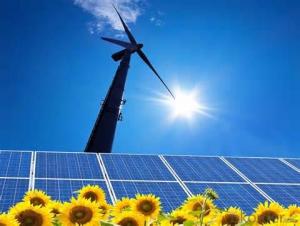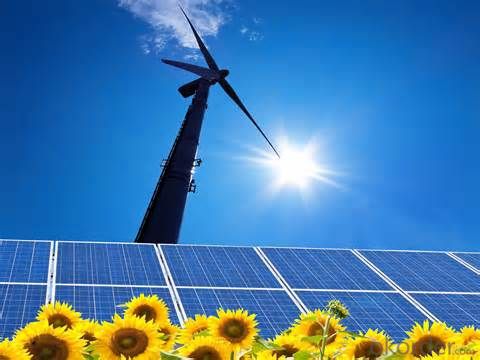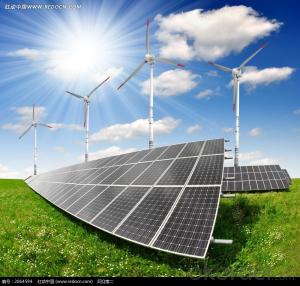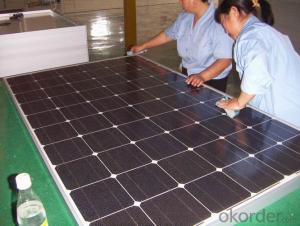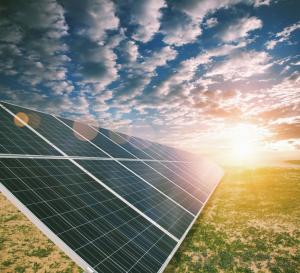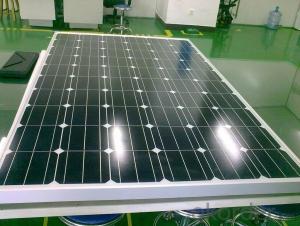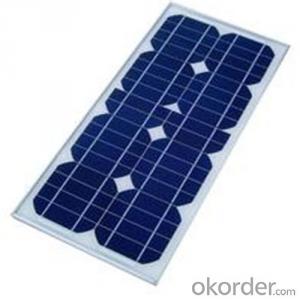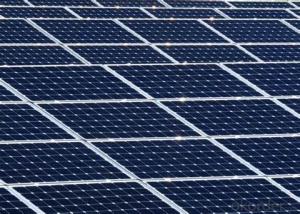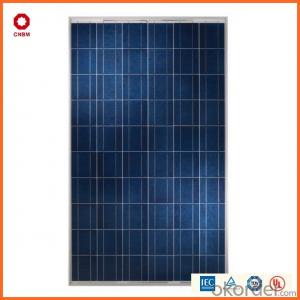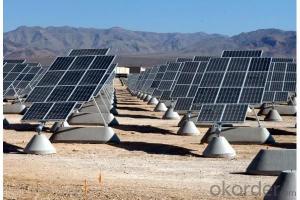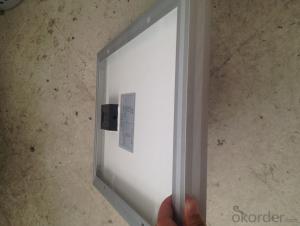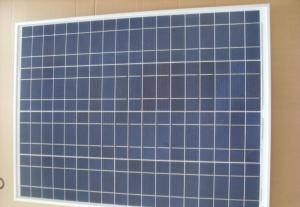High Efficiency 200W Polycrystalline Solar Panels for House in Texas
- Loading Port:
- China main port
- Payment Terms:
- TT OR LC
- Min Order Qty:
- 1000 watt
- Supply Capability:
- 1000000 watt/month
OKorder Service Pledge
OKorder Financial Service
You Might Also Like
Specification
Introduction of Poly solar panels CNBM
Polycrystalline Solar Panels 200W With High Efficiency
CNBM Solar photovoltaic (PV) Panel is designed for large electrical power requirements. It is the optimal choice for both on-grid and off-grid power systems. CNBM Solar panel offers high performance of power per square foot of solar array. Monocrystalline silicon(c-Si): often made using the Czochralski process. Single-crystal wafer cells tend to be expensive, and because they are cut from cylindrical ingots, do not completely cover a square solar cell module without a substantial waste of refined silicon. Hence most c-Si panels have uncovered gaps at the four corners of the cells.
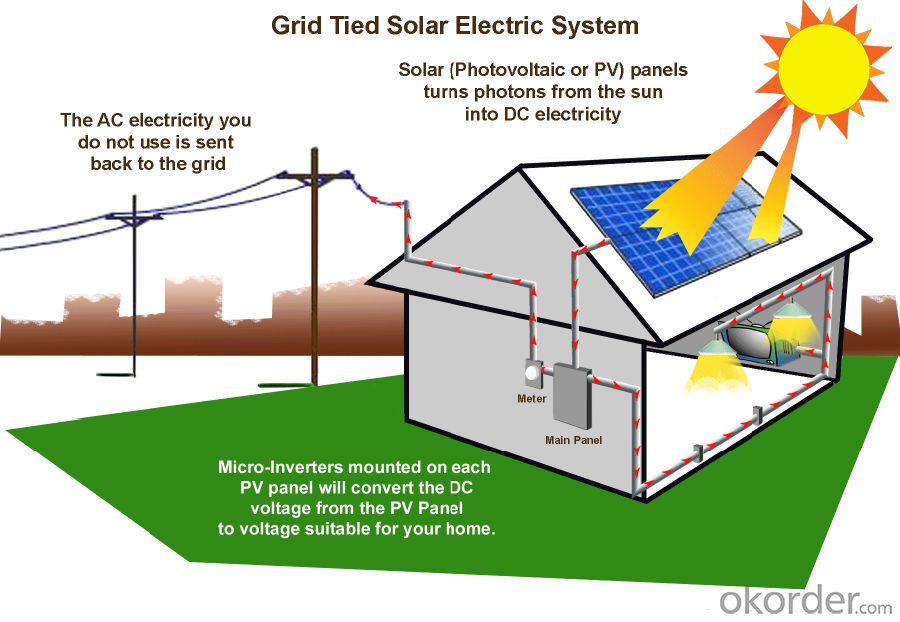
Feature
1.Solar Cell : High efficiency crystalline solar cell. Even if under the weak light, the solar module can produce maximum power output.
2.Tempered glass (toughened glass): Anti-reflecting coating and high transmission rate glass increase the power output and mechanical strength of solar module.
3.EVA and TPT: Using high quality EVA and TPT to prevent destroying and water.
4.Long lifetime: ≥25 years; Less power decrease.
5.Resisting moisture and etching effectively, not effected by geology.
6.The certificate issued by international authority: UL, TUV, IEC, VDE, CE.
Specification
Characteristics of Poly solar panels CNBM | |||||
Max Power Voltage Vmp(V) | 30.3 | 30.8 | 31.1 | 31.4 | 31.85 |
Max Power Current Imp(A) | 7.60 | 7.64 | 7.73 | 7.81 | 7.85 |
Open Circuit Voltage Voc(V) | 36.1 | 36.6 | 37 | 37.3 | 37.68 |
Short Circuit Current Isc(A) | 8.50 | 8.55 | 8.65 | 8.75 | 8.85 |
Max Power Pm(W) | 230W | 235W | 240W | 245W | 250W |
Temperature Coefficient of Cells Poly solar panels CNBM | |
NOCT | 45℃ ± 2℃ |
Temperature Coeffucients of Isc (%/℃) | 0.0492 |
Temperature Coeffucients of Voc (%/℃) | -0.3374 |
Temperature Coeffucients of Voc (%/℃) | -0.4677 |
Mechanical Data of Poly solar panels CNBM | |
Dimension | 1638 × 982 × 40 mm |
Weight | 19.5 kg |
No. of Cells and Connections | 60 (6 ×10) |
Tolerance | 0 ~ + 5 W |
Cell | Monocrystalline Cell 156 × 156 mm |
Packing | 624 Pcs/40ft(H) Container |
Limits of Poly solar panels CNBM | |
Operating Temperature | -40℃ to +85℃ |
Storage Temperature | -40℃ to +85℃ |
Max System Voltage | 1000VDC(IEC) / 600VDC(UL) |
Guarantees of Poly solar panels CNBM | |
Products Guarantee | 12 yrs free from defects in materials and workmanship |
Performance Guarantee | No less than 90% within 10yrs and no less than 80% within 25yrs |
Certificates | TUV(IEC61215&IEC61730),VDE(IEC61215&IEC61730),UL,CE |
Packaging Information
Package:26pcs/box
Quantity:1 box/pallent
Loading Capacity:952pcs/40ft
- Q: Hello, I am shopping for solar panels for my home and there are so many to choose from. My house uses 40 Kw of power a day. If you had to choose from the output power of a solar panel from below, which one would you choose and why would you choose it? 2 Volts 4 Amps 48Watts2 Volts 8.5 Amps 02Watts6 Volts 7 Amps 2Watts24 Volts 4.2 Amps 00.8Watts24 Volts 8 Amps 95Watts
- There is more to sizing a system than simply selecting panels. I would suggest that you contact a solar installer to do a bid on your system. The quote should be free, and you can always say no. If a house used 40 kWh per day in our area, that would suggest a 6 kW array to offset substantially all the energy usage over the course of a year. Serious panels tend to be in the neighborhood of 200 watts nowadays, and that would mean 30 of those. You could size the system smaller, of course, if you wanted to offset a smaller percentage of your electricity. If there is any way that you can reduce the energy requirments, that will save you more money than putting in big solar. For example, if you can cut that in half by adding insulation and more efficient appliances, you will save more money than if you got a big array to power everything as-is.
- Q: How can I determine the size of solar panel system I need?
- To determine the size of the solar panel system you need, you should consider your average electricity consumption, your location's solar potential, and the available roof or ground space for installation. Start by analyzing your energy bills to understand your average monthly and annual electricity usage. Then, consider the solar irradiation levels in your area, which can be found through online tools or consulting a solar professional. Additionally, assess the available area for installation, as larger systems require more space. Finally, consult with a solar installer or use online calculators to determine the appropriate system size that can meet your energy needs.
- Q: Can solar panels be used for powering outdoor signage?
- Yes, solar panels can be used to power outdoor signage. Solar panels harness sunlight and convert it into electricity, making them a sustainable and eco-friendly option for various applications, including outdoor signage.
- Q: Can solar panels be installed on historic homes or buildings?
- Yes, solar panels can be installed on historic homes or buildings. However, it is important to consider the specific regulations and guidelines in place for historic preservation in each jurisdiction. In some cases, there may be restrictions on the placement and design of solar panels to ensure they do not detract from the historical integrity of the property. It is advisable to consult with preservation authorities or experts to determine the feasibility and appropriate approach for solar panel installation on historic structures.
- Q: I am fairly new to the solar panel scene, and am eager to try to set one up myself instead of buying a kit. I am looking for a solar panel that puts out 00 Watts or more, and can produce more than 20 volts. Thanks
- a cheap one that doesn't burn up
- Q: What specification of solar panel would I need to power a laptop every day? I would need to use it for about 0 hours or so every day. I don't know anything about solar panels, but I am seriously thinking of getting one now and don't know who to ask.
- You will need, A battery to store the electricity from the solar panel. The amount of electricity from the panel varies up and down as things such as clouds, position of the sun, etc. reduce the amount of solar rays hitting the panel. The battery stores it all, the ups and downs, and sends it back out at a steady voltage so you can operate your p.c. / appliance. A minimum of 45 watts solar panel. 60 watts would be preferable. 45 watts will charge a battery in one day under ideal conditions. You turn the panel as the sun moves across the sky, no clouds. 60 watts will charge a battery in one day with out moving and regardless of clouds. A controler to prevent the electricity from flowing backwards from the battery to the solar panel when the sun goes behind a cloud or sets at night and the charge drops below the voltage of the battery. A good controller will tell you the charge condition of your battery so you know when it is too low to operate your p.c. safely. And finally an inverter with True Sine Wave capability to change the electricity from the battery into usuable power for your PC and other electronics. Not all inverters produce true sine wave electricity. The electricity has static in it and will make your pc screen jump around and not function as it should. New digital T.V.'s also require true sine wave electricity to operate. Go the extra cost and get the inverter with true sine wave and be happy with the way your p.c. functions. Figure out how many Watts your p.c. or appliance will draw. and match the Inverter to the need. Do not go too big, as they cost more and consume more of your stored electricity to operate. Save as much electricity as you can. You will be able to operate your p.c. appliance longer. When not using your p.c., you can operate your T.V. or other low watt appliance.
- Q: Can solar panels be installed on remote or off-grid locations?
- Yes, solar panels can be installed on remote or off-grid locations. In fact, they are particularly suitable for such locations as they do not require a connection to the traditional power grid. Solar panels can generate electricity by harnessing sunlight, making them a reliable and sustainable energy source for remote areas.
- Q: Any opinion on harbor freight solar panels ?
- Put my panel on roof of my motor home, regulator in belly rack with house batterys. Have had no problems in a year or so and they keep the house batterys charged
- Q: I got a really great deal on 2 houses because they were fixer-uppers. I'm living in one and the other I'm renting out. However, the previous owner did everything himself in 950 95, so needless to say, things are not to todays standards. Both houses need rewiring (there are no ceiling lights, few outlets, and mine has two old fuse boxes and the other has a breaker box but it pops the breaker a lot). The only reason they are still functional is because both houses use natural gas for water and heat, so otherwise, they electrical work is getting us by, but who knows for how long. I thought that maybe instead of redoing the electric, that I could just add solar panels to compensate for the small electric boxes. Also, since I would have to hire electricians to do all the work, which would be more cost effective (not including the decrease in utilities since I don't pay the utilities in the rental anyways)?
- No. solar panels would not solve your problems and are usually not cost effective. Solar panels will not help to compensate for undersized electrical service. You would still have to upgrade the existing service. Once that is done you should have no problems and all the electricity you need would come from your power company. Have an electrician come out and do an inspection and tell you what all needs upgrading. Solar panels would save you money on the monthly power bill but the cost to install them would be higher than your savings. If it made economic sense to have solar power then everybody would be doing it. That's why you see very few houses with solar panels on top.
- Q: Can solar panels be used in remote areas with no access to the grid?
- Yes, solar panels can be used in remote areas with no access to the grid. Solar panels generate electricity from sunlight, making them an ideal solution for off-grid locations where traditional power infrastructure is unavailable. They can be installed in remote areas to provide a reliable and sustainable source of energy, allowing for essential power needs such as lighting, charging devices, and running small appliances even in areas far from the grid.
Send your message to us
High Efficiency 200W Polycrystalline Solar Panels for House in Texas
- Loading Port:
- China main port
- Payment Terms:
- TT OR LC
- Min Order Qty:
- 1000 watt
- Supply Capability:
- 1000000 watt/month
OKorder Service Pledge
OKorder Financial Service
Similar products
Hot products
Hot Searches
Related keywords
